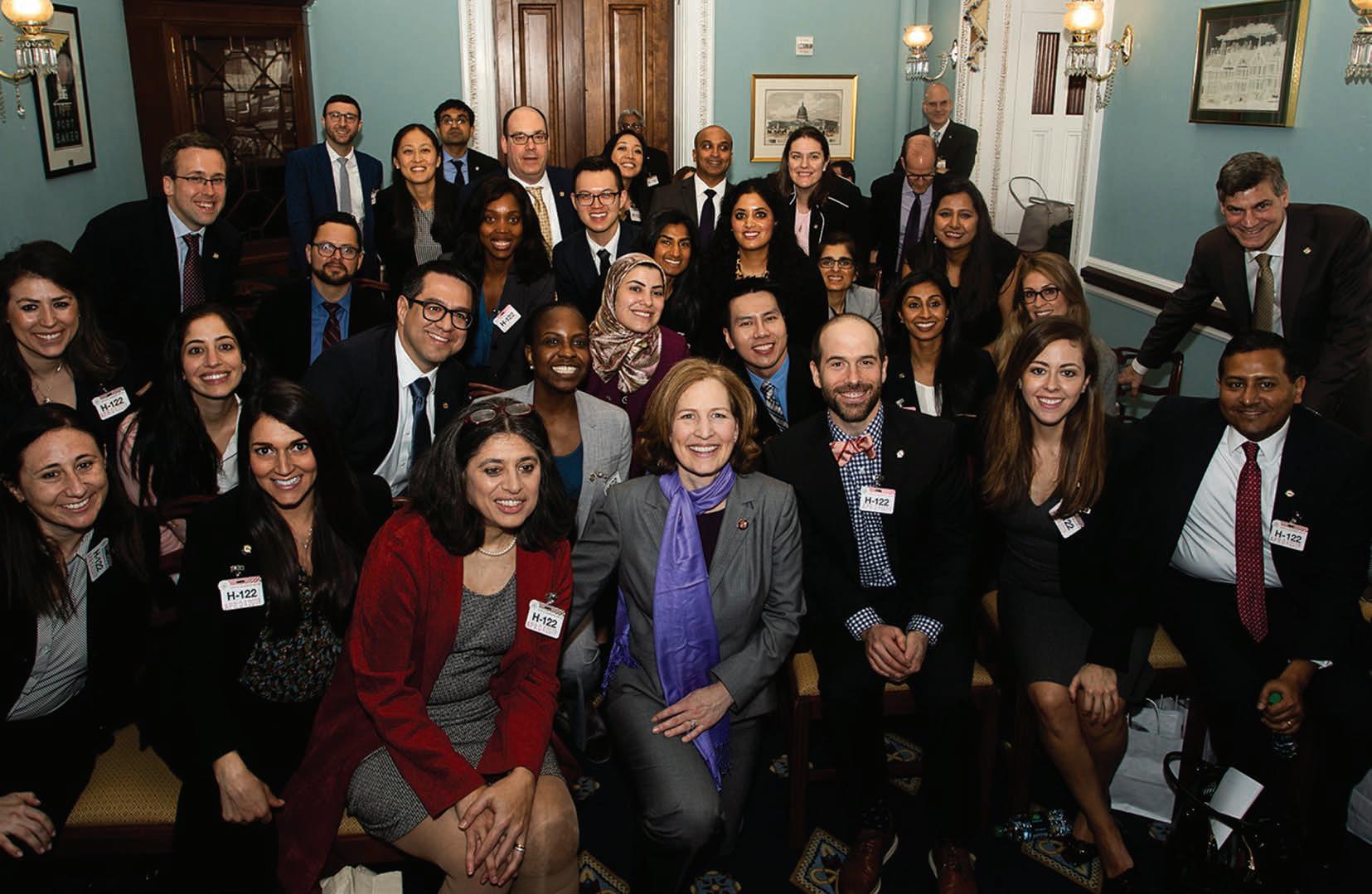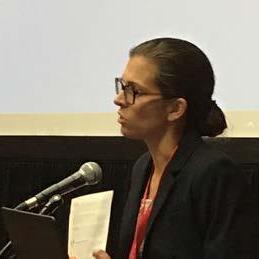
3 minute read
2018 ACG Junior Faculty Development Awardees Present in San Antonio
2018 ACG Junior Faculty Development Awardees Present Their Research in San Antonio
Dr. Adams’ project explores defining, measuring, and implementing highvalue care in GI, in particular as it relates to appropriate use of endoscopic resources. She is exploring optimizing specialty care access and delivery in the VA and beyond. Anesthesia-assisted sedation (AA) is a discretionary service that is rapidly replacing endoscopistdirected sedation as the new community standard looking at provider and facility factors (incentive). There is a lack of clear, evidence-based criteria to guide sedation triage. Her aims include developing and validating a predictive model to identify patients at risk for failing standard sedation.
Dr. Deepak’s project focuses on the limitations of current treatment targets in small bowel Crohn’s disease and the radiological response in the bowel wall. The aims of the project are: 1) prospectively determine if short term (14 weeks) transmural response (TR) on MRE in SBCD patients starting a new biologic predicts corticosteroid-free clinical remission at 52 weeks. Early TR on MRI as a treatment target that predict long-term, clinically relevant outcomes require prospective validation. Achievement of radiological TR 4 months after initiation of new biologic therapy predicts corticosteroid-free remission at 52 weeks; 2) Determine the role of a novel serum proteomic biomarker profile in predicting clinical remission 14 weeks after starting a new biologic. In preliminary data, they identified a panel of 12 serum proteins whose differential expression pattern from week 0 to week 6 correlates with clinical remission 14 weeks after starting a new biologic. This novel serum proteomic biomarker profile will predict primary non-response to a new biologic at 14 weeks. For year 2, Dr. Deepak hopes to complete enrollment with concurrent blood/stool collection, to submit for a grant examining performance of predictive models combining various elements of radiological data/response with baseline and serial clinical and proteomic data in predicting short term response and 1 year corticosteroidfree remission. For year 3, they plan to complete enrollment with concurrent blood/stool collection. In addition, Dr. Deepak intends to submit for a grant examining performance of predictive models combining various elements of radiological data/response with baseline and serial clinical and proteomic data in predicting short term response and one year corticosteroid-free remission.
Dr. Hiremath presented information related to eosinophilic esophagitis (EoE) and its increasing threat as a prevalent allergen-mediated condition. Dr. Hiremath’s work was based on the hypotheses that: 1) tissue-level biochemical changes related to EoE can be quantified by Raman Spectroscopy in vitro and in vivo; 2) Raman Spectroscopy would identify unique biochemical and biomolecular markers reflective of EoE activity as assessed by validated endoscopic (EREFS) and histologic (EoEHSS) metrics. Through his research, Dr. Hiremath was able to determine that glycogen content decreased with worsening tissue pathology (per EoEHSS). In addition, lipid ratio was higher in EoE compared to controls. Dr. Hiremath is working on enrollment to collect more in vivo data to determine clinical and statistical significance.

Dr. Yadlapati presented on the “Current Paradigm of Laryngopharyngeal Reflux (LPR).” The aims of her research are to: 1) assess the adjunctive role of UES assist device to PPI therapy, 2) identify clinico-physiologic phenotypes of patients with LPR, and 3) develop a multi-disciplinary clinical pathway for LPR. The central issue Dr. Yadlapati explores is the generalization of limited diagnostic and therapeutic strategies across a heterogeneous prevalent patient population, which impedes the ability to provide effective personalized care in LPR. Ultimately, her goal is to define a phenotype-guided care paradigm for LPR based on the distinct mechanisms of LPR. Dr. Yadlapati’s research reveals that out of adults with three months of sore throat and throat clearing, 60% of cases were misdiagnosed as LPR, 50% do not improve with PPIs, and it costs 50 billion health care dollars annually.











